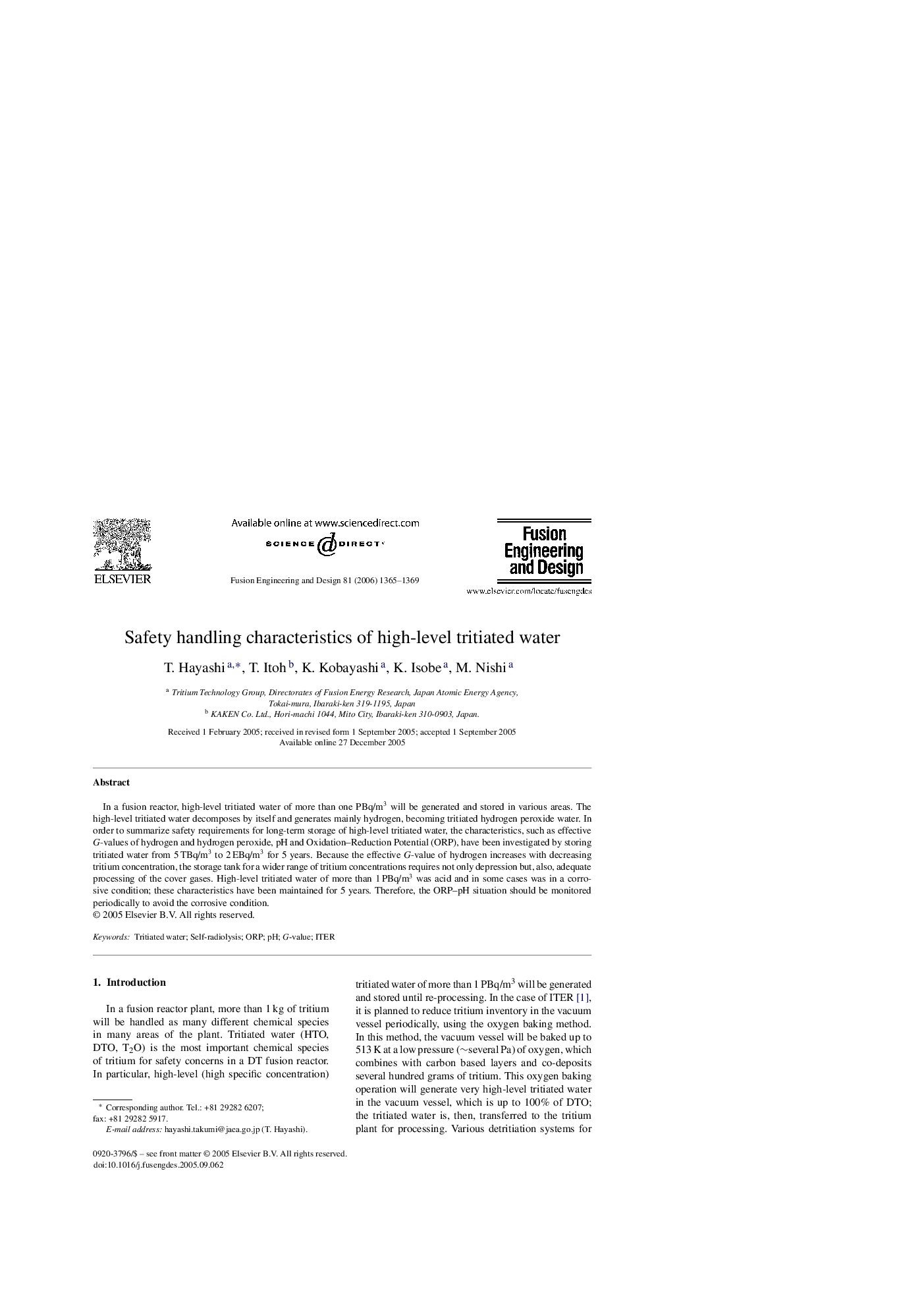| Article ID | Journal | Published Year | Pages | File Type |
|---|---|---|---|---|
| 273886 | Fusion Engineering and Design | 2006 | 5 Pages |
In a fusion reactor, high-level tritiated water of more than one PBq/m3 will be generated and stored in various areas. The high-level tritiated water decomposes by itself and generates mainly hydrogen, becoming tritiated hydrogen peroxide water. In order to summarize safety requirements for long-term storage of high-level tritiated water, the characteristics, such as effective G-values of hydrogen and hydrogen peroxide, pH and Oxidation–Reduction Potential (ORP), have been investigated by storing tritiated water from 5 TBq/m3 to 2 EBq/m3 for 5 years. Because the effective G-value of hydrogen increases with decreasing tritium concentration, the storage tank for a wider range of tritium concentrations requires not only depression but, also, adequate processing of the cover gases. High-level tritiated water of more than 1 PBq/m3 was acid and in some cases was in a corrosive condition; these characteristics have been maintained for 5 years. Therefore, the ORP–pH situation should be monitored periodically to avoid the corrosive condition.
